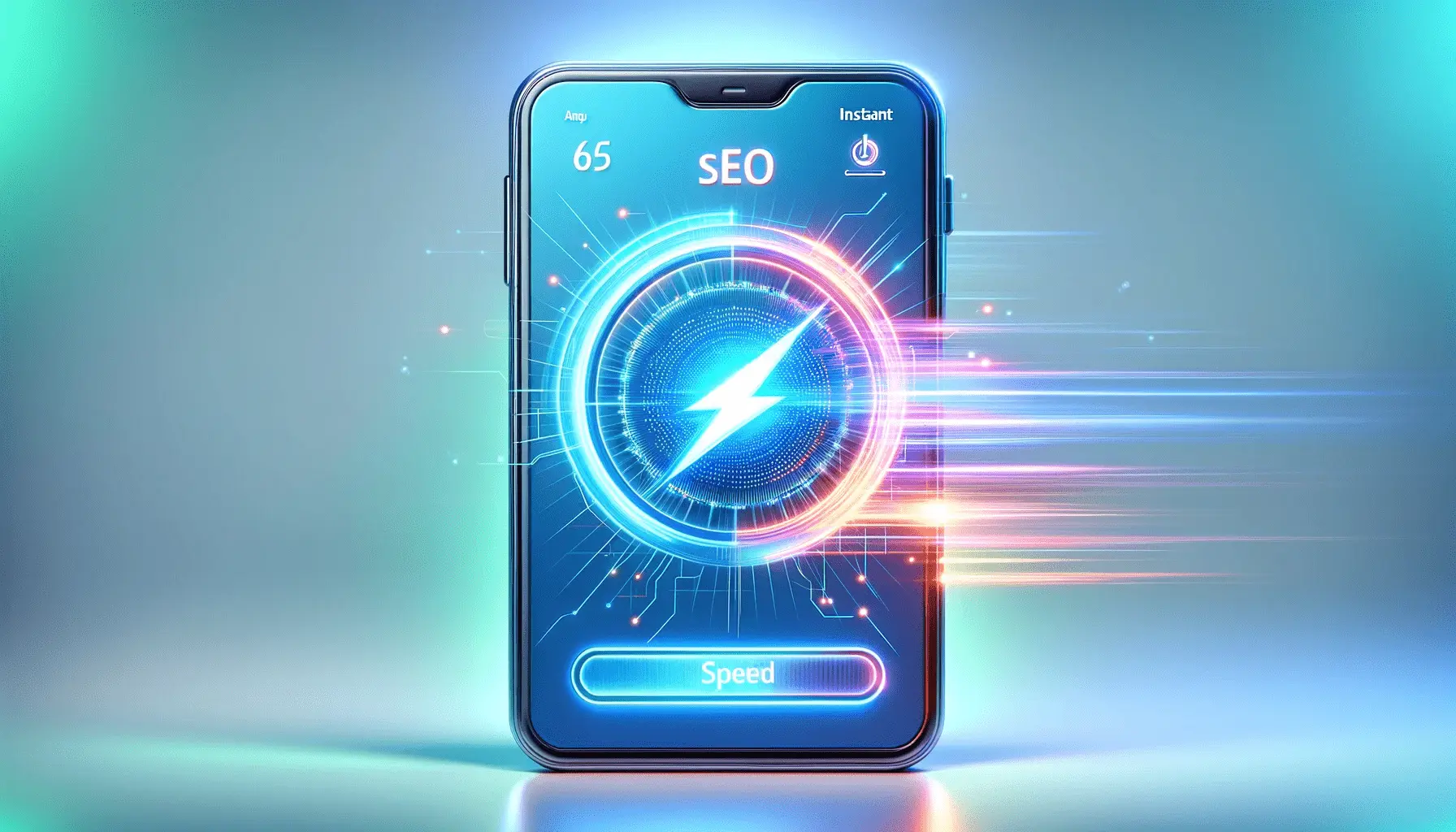In today’s digital age, the significance of mobile optimization within the realm of on-page SEO cannot be overstated.
As the internet becomes increasingly accessible on a variety of devices, particularly smartphones, ensuring that websites are optimized for mobile usage has become paramount.
This shift towards mobile-first indexing by search engines underscores the necessity for webmasters and content creators to prioritize mobile optimization in their SEO strategies.
Mobile optimization encompasses a range of practices designed to make a website more accessible and user-friendly on mobile devices.
This includes improving loading times, ensuring responsive design, and making navigation intuitive for touch-based interactions.
The goal is to provide a seamless experience for mobile users, who now constitute a significant portion of web traffic.
The importance of this practice is highlighted by the fact that mobile-friendliness is now a ranking factor in search engine algorithms, directly influencing a website’s visibility in search results.
- The Importance of Mobile-Friendly Websites
- Key Elements of Mobile Optimization
- Optimizing for Mobile SEO
- Enhancing Mobile User Engagement
- Mobile SEO Tools and Technologies
- Common Mobile SEO Mistakes to Avoid
- Future Trends in Mobile SEO
- Embracing the Future of Mobile Optimization in On-Page SEO
- FAQs on Mobile Optimization in On-Page SEO
The Importance of Mobile-Friendly Websites
With the advent of mobile-first indexing, search engines now prioritize the mobile version of a website when evaluating its content and structure for ranking purposes.
This paradigm shift has made mobile optimization not just a best practice but a critical component of on-page SEO.
Websites that fail to adapt to this change risk falling behind in search engine result pages (SERPs), losing out on valuable traffic and potential conversions.
Moreover, the user experience on mobile devices plays a crucial role in a website’s success.
A mobile-friendly website not only helps retain visitors but also encourages engagement and interaction.
Factors such as fast loading times, easy-to-read content, and accessible navigation contribute to a positive user experience, which in turn can lead to higher conversion rates and customer loyalty.
Responsive Design and Its Impact
Responsive design is at the heart of mobile optimization.
It ensures that a website’s layout and content dynamically adjust to fit the screen size and orientation of the device being used.
This adaptability eliminates the need for separate mobile sites and simplifies content management, as the same set of content serves both desktop and mobile users effectively.
Implementing responsive design not only improves user experience but also contributes to better SEO performance by adhering to search engines’ mobile-first criteria.
Responsive design also addresses the challenge of device diversity, catering to a wide range of screen sizes and resolutions.
By providing an optimal viewing experience across all devices, websites can cater to the broad spectrum of internet users.
This inclusivity not only enhances accessibility but also amplifies a website’s reach and engagement, further solidifying its presence in the digital landscape.
Ensuring that your website is optimized for mobile devices is no longer optional but essential for on-page SEO success and providing a superior user experience.
Key Elements of Mobile Optimization
Optimizing a website for mobile devices involves several key elements that work together to enhance the mobile user experience.
These elements are crucial for improving a site’s performance, usability, and search engine rankings.
By focusing on these aspects, webmasters can ensure their sites meet the expectations of modern internet users and search engine algorithms alike.
Speed Optimization
One of the most critical factors in mobile optimization is page speed.
Mobile users expect quick, responsive interactions when browsing the web.
Slow-loading pages can lead to increased bounce rates and decreased user satisfaction.
To optimize for speed, consider implementing the following strategies:
- Compress images and videos to reduce their file size without compromising quality.
- Minimize the use of heavy scripts and unnecessary code that can slow down page loading times.
- Utilize browser caching to store frequently accessed resources on the user’s device, speeding up subsequent visits.
- Choose a reliable hosting provider that offers fast server response times.
Responsive and Adaptive Design
Ensuring that your website adapts to any screen size is essential for mobile optimization.
Responsive design automatically adjusts the layout and content based on the device’s screen size, while adaptive design serves different versions of a site depending on the device.
Key considerations include:
- Using flexible grid layouts that resize content to fit the screen.
- Implementing scalable images and media queries to ensure visual elements look good on all devices.
- Testing your site on various devices and browsers to identify and fix any issues with responsiveness or display.
User Experience Enhancements
Improving the mobile user experience goes beyond just making a site accessible.
It’s about creating an intuitive and enjoyable interaction for the user.
To enhance mobile UX, focus on:
- Simplifying navigation to make it easy for users to find what they’re looking for with minimal taps or swipes.
- Ensuring clickable elements like buttons and links are large enough to be easily tapped with a finger.
- Providing clear and concise content that is easy to read on small screens.
- Offering features like search functionality and user-friendly forms to facilitate engagement.
Remember, the goal of mobile optimization is not just to make a site accessible on mobile devices but to provide a seamless and satisfying user experience that encourages engagement and conversion.
Optimizing for Mobile SEO
Mobile SEO involves tailoring your on-page optimization strategies specifically for mobile devices to improve search visibility and user engagement.
This process goes hand in hand with general SEO practices but places a greater emphasis on mobile user needs and search engine requirements for mobile content.
Mobile-First Content Creation
Creating content with a mobile-first approach is essential in today’s digital landscape.
This means prioritizing the readability and accessibility of your content on mobile devices.
Strategies for mobile-first content creation include:
- Writing shorter paragraphs and sentences to improve readability on small screens.
- Incorporating bullet points or numbered lists to break down information and make it easier to digest.
- Using engaging headings and subheadings to guide users through the content and highlight key points.
Local SEO for Mobile Users
Mobile searches often have local intent, with users looking for products, services, or information in their immediate vicinity.
To optimize for local SEO on mobile devices, consider the following tactics:
- Claiming and optimizing your Google My Business listing to improve visibility in local search results and Google Maps.
- Including location-specific keywords in your content, titles, and meta descriptions.
- Encouraging satisfied customers to leave positive reviews on your Google My Business profile and other relevant platforms.
Technical SEO for Mobile
Technical SEO plays a crucial role in optimizing a website for mobile devices.
This involves ensuring that your site’s technical elements are configured to support mobile usability and search engine crawling.
Key technical SEO considerations for mobile include:
- Implementing responsive design to ensure your site is accessible and performs well on all devices.
- Optimizing site speed by compressing images, leveraging browser caching, and minimizing code.
- Using structured data to help search engines understand your content and provide rich results.
- Ensuring your site is free from mobile usability issues by regularly conducting mobile usability tests.
Adapting your SEO strategy to focus on mobile optimization is not just about following best practices; it’s about recognizing the evolving way users access and interact with online content. By prioritizing mobile SEO, you can ensure your site meets the needs of your audience and the requirements of search engines, leading to improved visibility and engagement.
Enhancing Mobile User Engagement
Engaging mobile users and encouraging them to interact with your content requires a deep understanding of mobile user behavior and preferences.
With the majority of internet traffic now coming from mobile devices, optimizing for user engagement is more critical than ever.
Interactive Elements for Mobile
Incorporating interactive elements into your mobile site can significantly enhance user engagement.
Interactive features such as quizzes, polls, and interactive infographics not only make your content more engaging but also encourage users to spend more time on your site.
Consider the following when adding interactive elements:
- Ensuring interactive features are touch-friendly and easily navigable on a small screen.
- Keeping load times in mind, as interactive elements can be resource-intensive.
- Using these features to complement your content and provide value to the user, rather than as distractions.
Personalization and Mobile User Experience
Personalization can play a significant role in enhancing the mobile user experience.
By tailoring content, recommendations, and offers to individual user preferences and behaviors, you can create a more engaging and relevant experience.
Strategies for personalization include:
- Implementing location-based personalization to offer content or promotions relevant to the user’s current location.
- Using browsing history and user data to personalize content recommendations and search results.
- Creating a personalized user journey that guides users to content and products that match their interests and needs.
Optimizing Forms for Mobile Conversions
Forms are a critical element for conversions, whether for newsletter sign-ups, contact inquiries, or online purchases.
Optimizing forms for mobile users is essential to avoid frustrating users and losing potential conversions.
Key considerations for mobile form optimization include:
- Making forms as short and straightforward as possible, asking only for essential information.
- Using appropriate input types for different fields (e.g., date pickers, dropdowns) to simplify data entry on a touch screen.
- Ensuring form fields are large enough to be easily tapped with a finger.
- Providing clear and immediate feedback for errors or successful submissions.
By focusing on interactive elements, personalization, and optimized forms, you can significantly enhance the mobile user experience, leading to higher engagement rates and improved conversion metrics.
Mobile SEO Tools and Technologies
Utilizing the right tools and technologies is essential for effectively optimizing your website for mobile SEO.
These tools can help identify areas of improvement, monitor mobile usability, and ensure your site meets the latest mobile SEO standards.
Mobile-Friendly Test Tools
Google’s Mobile-Friendly Test is an invaluable tool for assessing whether your site is optimized for mobile devices.
By simply entering your site’s URL, you can quickly determine if your site passes Google’s mobile-friendly criteria.
This tool also provides suggestions for improvements if any issues are detected.
Additionally, other third-party tools offer in-depth analysis and recommendations for enhancing mobile usability.
Responsive Design Checkers
Ensuring your website’s design is responsive across all devices is crucial for mobile optimization.
Responsive design checkers allow you to test how your site appears on different screen sizes, including tablets and smartphones.
These tools help identify layout issues, unresponsive elements, and other design flaws that could impact the mobile user experience.
Page Speed Optimization Tools
As mentioned earlier, page speed is a critical factor for mobile SEO.
Tools like Google’s PageSpeed Insights analyze your site’s performance on both mobile and desktop devices and offer specific recommendations for speeding up your site.
Implementing these suggestions can significantly improve loading times, enhancing user satisfaction and SEO performance.
SEO and Analytics Platforms
Comprehensive SEO platforms, such as Semrush or Google Analytics, provide valuable insights into your mobile SEO performance.
These tools can track mobile traffic, user behavior, conversion rates, and more, offering a holistic view of how mobile users interact with your site.
By analyzing this data, you can make informed decisions to further optimize your mobile SEO strategy.
Leveraging these tools and technologies can streamline the process of optimizing your site for mobile devices, ensuring you stay ahead of SEO trends and meet the expectations of mobile users.
Common Mobile SEO Mistakes to Avoid
Achieving optimal mobile SEO requires a careful approach, as certain missteps can negatively impact your site’s search engine rankings and user experience.
Being aware of common pitfalls and actively working to avoid them can significantly enhance your mobile SEO efforts.
Ignoring Mobile User Experience
One of the most critical errors is neglecting the mobile user experience.
A site that is not designed with mobile users in mind can lead to frustration, high bounce rates, and lost opportunities.
Ensure your site is navigable, fast, and accessible by:
- Implementing a responsive or adaptive design.
- Optimizing page load times for immediate content delivery.
- Designing touch-friendly interfaces with adequately sized buttons and links.
Overlooking Local SEO
Another common mistake is underestimating the importance of local SEO for mobile users.
Many mobile searches have local intent, and failing to optimize for local search can mean missing out on potential traffic and customers.
Enhance your local SEO by:
- Claiming and optimizing your Google My Business listing.
- Including local keywords in your site’s content and meta tags.
- Encouraging customers to leave positive reviews on your Google My Business profile and other review sites.
Poor Content Formatting
Poorly formatted content can significantly detract from the mobile user experience.
Mobile screens are smaller, and content that is not optimized for these devices can be difficult to read and navigate.
Improve content formatting by:
- Breaking text into smaller paragraphs and using bullet points for easier reading.
- Using headings and subheadings to organize content and guide readers.
- Including images and videos that are optimized for fast loading on mobile devices.
Slow Page Speed
Slow-loading pages are a major deterrent for mobile users.
With mobile internet users often on the go, they expect quick access to information.
A slow site can lead to increased bounce rates and decreased user satisfaction.
Address page speed issues by:
- Compressing images and videos to reduce their file size.
- Minimizing the use of heavy scripts and plugins.
- Implementing browser caching and optimizing server response time.
Assuming that a desktop-optimized site will automatically provide a good mobile experience is a mistake. Mobile optimization requires specific strategies and considerations to ensure your site meets the needs of mobile users and search engines.
Future Trends in Mobile SEO
As technology evolves, so do the trends in mobile SEO.
Staying ahead of these trends is crucial for maintaining and improving your website’s visibility and user engagement.
By anticipating and adapting to these changes, you can ensure that your site remains competitive and relevant in the ever-changing digital landscape.
Increased Focus on Voice Search
With the rising popularity of digital assistants like Siri, Alexa, and Google Assistant, voice search is becoming an increasingly important factor in mobile SEO.
Optimizing for voice search involves understanding natural language queries and providing concise, direct answers to user questions.
Future strategies may include:
- Incorporating question-based keywords and long-tail phrases into your content.
- Creating FAQ pages that directly answer common queries related to your niche.
- Ensuring your local SEO is robust, as many voice searches are local in nature.
Advancements in Artificial Intelligence
Artificial intelligence (AI) is set to play a significant role in mobile SEO, influencing how search engines understand and rank content.
AI can help personalize the user experience, improve search accuracy, and offer predictive search suggestions.
To leverage AI in mobile SEO, consider:
- Using AI tools to analyze user behavior and tailor content recommendations.
- Implementing chatbots to improve user engagement and provide instant assistance.
- Optimizing for AI-driven search features, such as Google’s BERT algorithm, which focuses on understanding the context of search queries.
Emphasis on Mobile Page Experience
Google’s introduction of the Page Experience update highlights the importance of user experience factors, including mobile-friendliness, safe browsing, HTTPS, and intrusive interstitial guidelines.
As these factors become more critical in ranking algorithms, focusing on creating a seamless mobile page experience is essential.
This includes:
- Ensuring your site is secure and uses HTTPS.
- Minimizing the use of pop-ups and other elements that can hinder mobile usability.
- Continuously monitoring and improving Core Web Vitals scores for the best mobile performance.
By keeping an eye on these future trends and incorporating them into your mobile SEO strategy, you can stay ahead of the curve and ensure that your site not only meets the current standards but is also prepared for what’s to come in the world of mobile search.
Embracing the Future of Mobile Optimization in On-Page SEO
The landscape of on-page SEO is continually evolving, with mobile optimization at the forefront of this transformation.
As we delve deeper into the digital age, the emphasis on creating mobile-friendly websites has never been more critical.
The shift towards mobile-first indexing by search engines underscores the importance of adapting to the changing behaviors and preferences of users who increasingly rely on mobile devices for their internet access.
The Pillars of Mobile Optimization
Mobile optimization encompasses a myriad of strategies designed to enhance the user experience on mobile devices.
From implementing responsive design to optimizing page speed and ensuring content is mobile-friendly, each element plays a pivotal role in improving a website’s visibility and user engagement.
Moreover, the integration of local SEO and voice search optimization reflects the nuanced needs of mobile users, further emphasizing the importance of a comprehensive mobile SEO strategy.
Anticipating Future Trends
The future of mobile optimization in on-page SEO is poised for exciting developments, driven by advancements in technology and shifts in user behavior.
The rise of voice search, the increasing relevance of artificial intelligence, and the focus on mobile page experience highlight the dynamic nature of mobile SEO.
Staying abreast of these trends and incorporating them into your optimization efforts will be crucial for staying competitive in the digital marketplace.
Key Takeaways for a Mobile-First World
- Responsive design is non-negotiable for ensuring your website is accessible across all devices.
- Page speed optimization remains a critical factor for enhancing user experience and search engine rankings.
- Local SEO and voice search optimization are essential for catering to the specific needs of mobile users.
- Adapting to future trends, such as AI and improved mobile page experience, will be key for maintaining and improving your site’s relevance and performance.
In conclusion, mobile optimization in on-page SEO is not just a trend but a fundamental shift in how websites are designed and optimized for search engines and users alike.
By embracing this shift and integrating mobile-first strategies into your SEO efforts, you can ensure that your website not only survives but thrives in the ever-evolving digital landscape.
The journey towards mobile optimization may be complex, but the rewards in terms of improved user engagement, higher search rankings, and increased conversions make it a worthwhile endeavor for any digital marketer or website owner.
Want your website to top Google search rankings? Leave the SEO to our professional agency!
FAQs on Mobile Optimization in On-Page SEO
Explore common queries about enhancing your website’s mobile friendliness and on-page SEO performance.
It’s the process of optimizing webpages for mobile devices, ensuring content and layout provide a seamless user experience and improve search rankings.
Responsive design ensures a website adapts to any screen size, improving usability and supporting Google’s mobile-first indexing for better rankings.
Page speed is a key ranking factor. Faster loading times enhance user experience on mobile devices, reducing bounce rates and improving SERP positions.
Yes, optimizing for local search is vital for mobile users who often search for products or services nearby, improving visibility and traffic.
Interactive elements engage users, keeping them on-site longer. This positive user behavior signals to search engines the value and relevance of your content.
Properly formatted content, with short paragraphs and bullet points, improves readability on mobile devices, enhancing user experience and engagement.
Technical factors include responsive design, fast loading times, and mobile-friendly navigation. Addressing these improves usability and search rankings.
Advancements in voice search and AI will shape mobile SEO, emphasizing the need for natural language processing and personalized user experiences.










